- Home
- M G Vassanji
A Place Within Page 12
A Place Within Read online
Page 12
And every grain of dust must drink its fill.
The emperor tried to escape but was captured at Humayun’s tomb in the Nizamuddin area. His two sons and a grandson surrendered, after which they were stripped and shot dead by the officer in command outside the walls of Delhi, in the presence of a few thousand of their men who had been convinced to lay down their arms. Their corpses were taken by the Sikhs and displayed in front of the gurudwara, their temple, where 182 years before their Guru Tegh Bahadur had been executed by another Mughal, Aurangzeb. The officer, William Hodson, wrote that night, “I cannot help being pleased with the warm congratulations I received on all sides for my success in destroying the enemies of our race.”
Bahadur Shah, the last Mughal emperor, after a trial whose outcome was no surprise, was exiled to Rangoon, Burma, with his wife and other family members, where he died three years later and is buried. He wrote an epitaph for himself, often quoted as a celebrated lament of exile. The last verse reads, “How unlucky is Zafar! For burial / Even two yards of land were not to be had, in the land of the beloved.” A portrait of Bahadur Shah shows a wasted man with a long, quite handsome face and a white beard, in royal tunic and turban; a photograph in an English account of the Mutiny depicts a sickly old man in bed. We see what we want to see.
A film has been made, called Mangal Pandey, about the events that apparently triggered the Mutiny. It bears little resemblance to documented history, and with typical Bollywood illogic (Pandey forms a close friendship with his British commanding officer, who in turn rescues a widow from her husband’s funeral pyre and falls in love with her) is an attempt to create a new legend for the gullible or patriotically romantic. The film ends with footage about Gandhi, thus grafting this new romance onto the real-life struggles for independence. Mangal Pandey is one of a spate of recent political films, including Lagaan and 1942: A Love Story, all extremely popular, in which the English are portrayed mostly as boors and thugs. A remake of the classic Umrao Jaan, which is based on a novel set in the same period, about a young girl who is kidnapped and becomes a celebrated courtesan, has a lengthy scene depicting mounted British soldiers (no Sikhs) attacking Lucknow’s citizens. A blood-soaked rapist is forgiven by his victim because he has taken up arms against the British. It is not the films so much as their provenance that is interesting, telling us that memories of British dominance go deep and continue to smart.
This was demonstrated in a remarkable fashion when a group of British historians and descendants of the fallen came to India recently to retrace the events of the insurrection on its hundred and fiftieth anniversary and commemorate the dead. In Meerut the group was barred from entering the cemetery by protestors bearing black flags, consisting of Indian nationalists and Muslim clerics according to reports, who saw the purpose of the visit as “an insult to Indian freedom fighters.” In Lucknow the tourists were pelted with stones, cow shit, and other objects. The tour was aborted. “What sort of world is this?” said one of the visitors later. “People throwing muck at an eighty-two-year-old who can’t even walk without help.”
Old Delhi, fetid Delhi
alleys and little squares and mosques
like a stabbed body
like a buried garden
OCTAVIO PAZ
There is an organic quality to this old city of the Mughals, Shahjahanabad, a thrilling wholeness consisting of a multitude of people and occupations jostling in a close space rich with history, and a pace of life you will find nowhere else in Delhi. Here, as in Manhattan—though the two places could not be more different—you do not tarry, are simply swept up by its life and pace and carried along.
On our way, busy meat shops; sweetmeats, salty namkeens frying; fresh-baked breads and cakes on display; a sidewalk book vendor eating meat curry with chappati opposite the Jama mosque; a perfume seller calling out, rubbing samples on people’s backs; boys playing alley cricket; cycle rickshaws, horses, mules, cows; burqa-covered women walking stiffly, proudly on the street; busy shopkeepers, idle shopkeepers, a bevy of women gathered around outside a shop to inspect a heap of material. I’ve never seen so many veiled women in India before.
But you don’t see this Muslim presence outside the fabled gates. It seems as if they have barricaded themselves into this old city of the poets and kings where once their glory lay. What was life like for them here, before Partition, before the mass influx of the Punjabis and all the others who extended and transformed the city?
One of the most pithy, achingly nostalgic accounts of upper-class Muslim life in Old Delhi—Shahjahanabad—is contained in the novel Twilight in Delhi, by Ahmed Ali. Written in English and published first by Virginia and Leonard Woolf’s Hogarth Press in 1940, most copies were destroyed in the London Blitz, and the book remained long out of print and mostly forgotten, until a new edition came out in 1966 in Bombay. It is now a recognized classic.
It is 1910 as the novel opens. Day begins in Mir Nihal’s haveli with, as always, the sound of the dawn call to prayer from the great Jama mosque, the voice and identity of the muezzin, the caller, high in his tower, familiar to all in this Delhi community. Thence we witness in slow movements the final days and years of Mir Nihal, which coincide with the decline of the old Delhi as the British consolidate their hold over India. The tone of the novel is elegiac, its gaze ironic and tender upon this old lover, Delhi:
Destruction is in its foundations and blood is in its soil. It has seen the fall of many a glorious kingdom, and listened to the groans of birth. It is the symbol of Life and Death, and revenge is its nature…. But still it is the jewel of the eye of the world, still it is the centre of attraction.
Mir Nihal is a member of the old elite, his ancestors having arrived centuries before (this we surmise) from the Muslim lands of the north and west. He has an interest in a lace dealership, where he goes to work every day, but he also has property in his village and in the city. He has a young mistress, whom he supports and visits in the evening, a male indulgence; for his other leisure he flies pigeons, and he maintains an interest in alchemy and medicine. This is the Delhi in which suddenly someone in the midst of a conversation may break off into a line or two of Ghalib, say, or Saadi, or any of the beloved poets, including the former emperor Bahadur Shah; where your beggar at the door may be a desperate soul or a well-known mystic; where, sitting on a terrace in the balmy night, suddenly you hear a qawali recital in progress at a neighbour’s house, the devotions addressed, the author informs us, to Allah, his Prophet, or an earthly lover; where in thanksgiving a family might go to pay respects at the grave of Shaikh Nizamuddin or some other saint. The women, behind the gates of the haveli, spend their time “eating, talking, cooking, sewing, or doing nothing” or arranging marriages. And the muezzin at the Jama Masjid continues to give his call to prayer at the regular intervals.
So life passes, at its own beat; a life that has, one feels, maintained a thread of continuity from the Middle Ages in Isphahan, say, or Bukhara, or Balkh, to the present. But in reality the world has changed, continues unpityingly to change. On Chandni Chowk, the main thoroughfare, preparations have been underway for the upcoming coronation of King George, the foreign emperor; those old enough to remember, and Mir Nihal is one of them, recall bitterly the bloody British takeover of Delhi just over fifty years previously. And when Coronation Day arrives, they swallow the bitter pill and go and watch as the royal procession leaves the Red Fort and proceeds through their Chowk,
one long unending line of generals and governors, the Tommies and the native chiefs with their retinues and soldiery…. In the background were the guns booming, threatening the subdued people of Hindustan. Right on the road, lining it on either side, and in the procession, were English soldiers, to show, as it seemed to Mir Nihal, that India had been conquered with the force of arms, and at the point of guns will she be retained.
As he watches, Mir Nihal recalls the former glory of Delhi under the Muslim sultans, Shah Jahan, Humayun, Firoz Shah, and even the Delhi of the
Mahabharata. As the procession passes the Jama Masjid, “whose facade had been vulgarly decorated with a garland of golden writing containing slavish greetings from the Indian Mussalmans to the English King,” he recalls how, in 1857, Delhi fell into the hands of the English, who contemplated the destruction of the mosque, or its conversion into a church; how the Muslims defended it, with swords against guns, and a bloodbath ensued.
To be fair, the sultans had also often retained Delhi by force of arms, though they were Indians now, their ancestors having arrived centuries ago and married locally, and there was no other land, no other flag, to which they owed allegiance. But Mir Nihal’s world had to end, its time was over.
Soon after the Coronation, cruel changes are in store for this occupied city. Its ancient walls are proposed to be demolished; the row of peepal trees that forms the central boulevard on Chandni Chowk, giving it beauty and character, will be cut down. The seventh Delhi has fallen, and an eighth new Delhi is under construction beyond the walls; “strange people had started coming into the city, people from other provinces of India, especially Punjab.” But, people predict, this new Delhi and its rulers too will one day fall, as the others had done. Already calls for freedom have begun, and there is word of a “Terrorist Movement.”
Three years after the Coronation—Mir Nihal cannot know this—a bomb was thrown at the viceroy’s procession in Chandni Chowk. The viceroy was splashed with blood and the man behind him was killed.
A woman’s point of view, from a generation later, is presented in Attia Hosain’s tenderly evocative novel Sunlight on a Broken Column. The setting here is Lucknow, another northern city celebrated for its courtly culture, its romance, its poets, and its architecture. Hosain describes the inevitability of change in the fortunes of the traditional Muslim feudal elite as the independence of India draws near. The story is told by a young woman called Laila, a devourer of books and curious about the world outside, and her refusal to accept her circumscribed, protected place within the family system and the role of a consort to a husband who will be selected for her. Not only does she question the absolute authority of the male elders of the family, abetted by the women, she also questions the privilege of her class over those whom they rule in their domain. Independence arrives, and Partition. Whatever country these Muslims opt for, India or Pakistan, their world is now utterly lost, their way of life, their privileges, erased. Those who choose to go to Pakistan lose their homeland, their beloved city; and those who stay have to accept a new, insecure, and often second-class existence.
If the pronouncement of Satish, the Hindi professor-jeweller I met on Dariba Kalan, on how Hindus and Muslims lived together sounds a bit too practised, the celebrated novelist Krishna Sobti evokes, in her Dil-o-Danish (The Heart Has Its Reasons), a relationship between a married Hindu lawyer and his Muslim mistress that is more textured. The time is the 1920s in Shahjahanabad, just about a decade after Ahmed Ali’s Mir Nihal watches his world pass away in the wake of the Coronation procession. Kripanarayan, Sobti’s character, is from the upper-class Punjabi Hindus who have benefited from the British takeover of the city. He is a romantic as well as a successful lawyer. At the end of the day he longs to spend his hours with Mehak, a passionate and beautiful woman “who ruled his heart” and by whom he has had two gifted children whom he wants to do well in life. But he is married to Kutumb, whom he has crowned “queen of hearth and home,” and there are family and traditional obligations to which he is bonded. And so we find him helplessly strung between two worlds, two households, two relationships. This modern novel of Old Delhi, told in several voices and quite aware of the women’s position in society, cannot help but also be elegiac as it reflects on the passage of time and the loss of poetry and romance, though in the fates of Mehak’s two children it also looks to a future that seems more positive.
Mastering this old city, getting to know its narrow streets and gulleys, can also become an obsession…it seems just about achievable, perhaps one more visit will do it. During my more recent visits, Delhi Gate, the southernmost entrance, has become my geometric origin or reference point. Straight ahead (northwards) comes the Red Fort by the Jumna river; westwards from it runs Chandni Chowk. West from Delhi Gate runs Asaf Ali Road, presumably along the old wall of the city, on which are also the Turkman Gate and the Ajmeri Gate. Within these bounds, Old Delhi is yours to explore.
From Delhi Gate, the Bazar Chitli Qabar Marg goes its crooked way to the great mosque, the Jama Masjid, offering along its length sweetmeats, a Jain temple, jewellers, scrap metal, restaurants, pots and pans, clothes, money changers and Pakistan visa forms, flowers, peanuts, popcorn. If Mir Nihal’s world is gone, his Delhi, though transformed, still thrives, as one pushes through the bhid—the crowds—without the space before you even to lift up the map in your hand. A motorbike arrogantly speeds through the crowd without a pause as people jump aside to escape with their lives; thus a metaphor comes alive, representing power and wealth. Otherwise the bicycle rickshaws patiently ply their trade, these alleys are made for them. They are the speediest conveyance in this bustling place. There can actually be a rickshaw traffic jam here: three alleys meet near a drain that is being opened, each of them jammed with rickshaws full of dainty-looking uniformed girls returning home from school and women in niqab; and the pedestrian has to jump over a rickshaw wheel to get through the knot.
The Jama Masjid, built by Shah Jahan and completed in 1656, is a glorious and commanding sight, pride of this old city and once its very heart. It is the largest mosque in India. Built on a hill, it stands ten yards above the level of the city, flights of steps leading up to its gates. As I arrive, a Japanese camera crew is at work at the southern gate. The vast courtyard can hold up to twenty-five thousand people, five hundred to a row. An arcade runs all around it, from which is visible a panoramic view of the city. There are three gates, and on the fourth, western, side, as in all mosques east of Mecca, is the roofed section which is the prayer hall, with its many pillars and eleven arched entrances from the courtyard, the central one larger and surmounted by a dome. Two smaller tapered domes are on either side, and two tall minarets. Visible from the eastern gate, in the near distance at the end of a wide promenade that must have been beautiful once, is the Red Fort; it is along the promenade and through the imposing eastern entrance that the emperor arrived, so it was also known as the Shahi Gate. Outside the northern gate, when the Mutiny had been quelled, the defenders of the mosque faced off an English officer called Thomas Metcalfe as he stood down on the street below with his men, ready to demolish the site. The imam of the mosque is a direct descendant of the man brought from Bukhara by the emperor Shah Jahan to inaugurate it and is an influential figure much courted by politicians and media, especially before elections.
In the days not long gone, before globalization gained pace and “IT” opened the door to an Alibaba’s cave of economic success and exuberant consumerism, you were told by friends before you left for Delhi where you should look for nonvegetarian food, should the craving come upon you, or, what was more likely, should the kids rebel, having had enough of mattar paneer, alu gobhi, and toor ki daal. There were the large tourist hotels, and one or two places in Connaught Place, and one or two at Khan Market, a five-minute walk from the India International Centre, which itself also served nonveg of a simple but consistent variety, but where you had to be a member or go with one. And finally, for the connoisseur and the committed carnivore, there was Karim’s, capital of Mughal nonveg, tucked away in Shah Jahan’s Delhi on Chitli Qabar Marg, a few yards down from his grand mosque. Nowadays nonveg has become so accessible and acceptable that many people don’t remember the days when asking a friend how to get to Karim’s could be an embarrassment, especially in the days of Hindu-Muslim tension following the destruction of Babur’s mosque. In any case, in the mostly vegetarian Delhi of the time, here was meat galore, cooking on spits outside a rather drab-looking establishment. With its reputation now established internationally, and t
he Delhi-wallah with even a more modest vegetarian palate nibbling at chicken or fish (as my friend Krishan Chander now does, convinced after an angiogram that they are not a bad substitute for veg cooked in ghee), Karim’s has branches outside the area, though people swear by the good old plain Karim’s of the walled city. Any bystander will point out its small sign, and you say, Ah! and head towards it, as the owners of neighbouring establishments, their menus no different, peek out with looks of envy and wonder what could be so special about Karim’s. The claim is that Haji Karimuddin’s forefathers were employed in the royal kitchens of the Mughals; after the banishment to Burma of the last emperor, the Haji brought his culinary knowledge to the service of the common man and woman outside the walls of the Red Fort. Karim’s opened in 1913.
You enter a short alley and are greeted by a large red board and a counter where curries are cooking in metal pots, and to your right kebabs are grilled on fires. There are three dining rooms around the small courtyard, which allows parking for a few motorbikes, and another dining room a floor up. It’s all very informal, as you expect. Once seated on the bench seats, you can’t decide what to order. Succulent mutton curries, various kebabs, biriyanis, assorted naans and rotis pass you by. The menu is diverse, at variance with the typical north Indian. I find the shammi kebabs, as starter, perfect in texture and taste; the seekh kebab is good; the mutton burra a little too dry. The brain curry cooked in garlic and spices comes under a layer of oil, so you have to forget health warnings for the day. The lamb stew and Shahjahani chicken curry are wonderfully spiced but drenched in oil, so that after the meal a good jog back to Lodi Road is worth contemplating. The biriyani is disappointing, it is what we called pilau at home, and no better: essentially rice cooked with garam masala and meat, in this case two rather bony pieces of lamb.

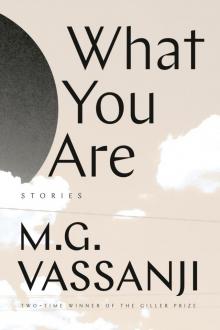 What You Are
What You Are A Delhi Obsession
A Delhi Obsession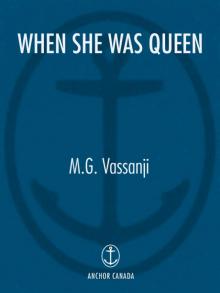 When She Was Queen
When She Was Queen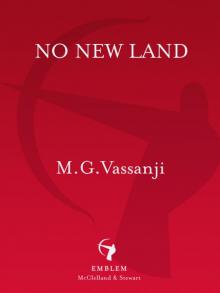 No New Land
No New Land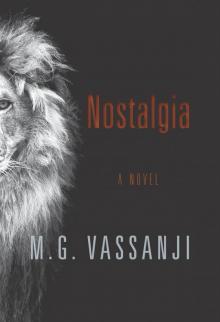 Nostalgia
Nostalgia Mordecai Richler
Mordecai Richler The Book of Secrets
The Book of Secrets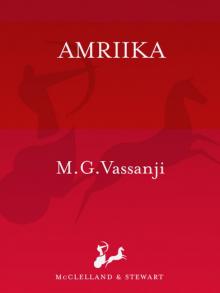 Amriika
Amriika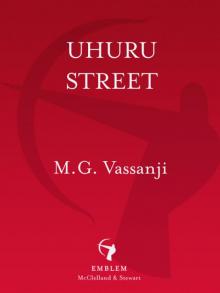 Uhuru Street
Uhuru Street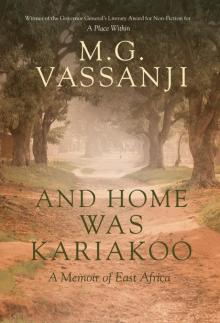 And Home Was Kariakoo
And Home Was Kariakoo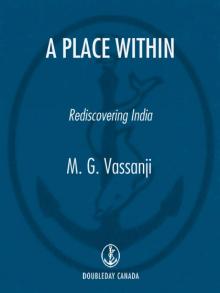 A Place Within
A Place Within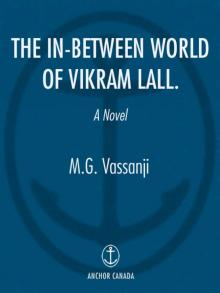 The In-Between World of Vikram Lall
The In-Between World of Vikram Lall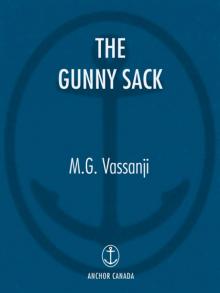 The Gunny Sack
The Gunny Sack